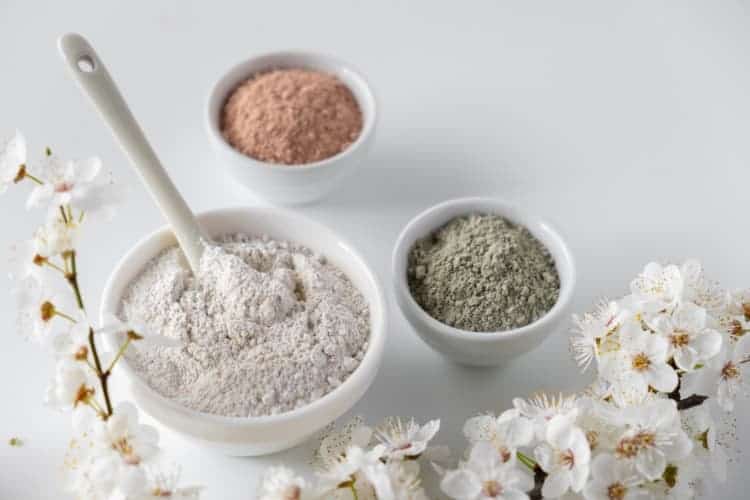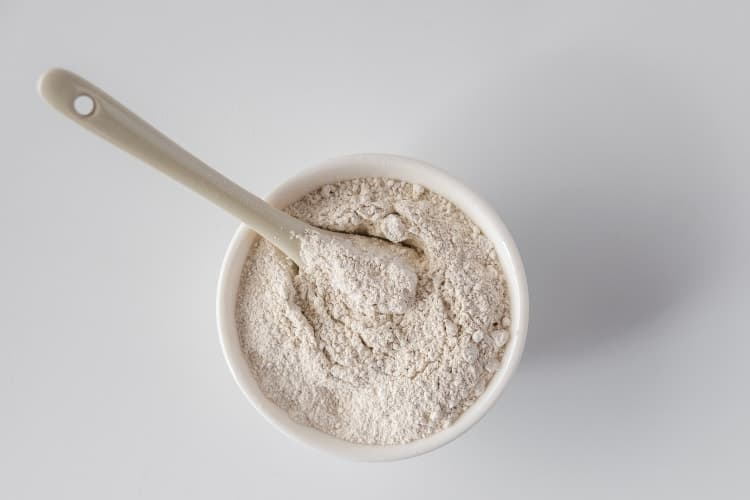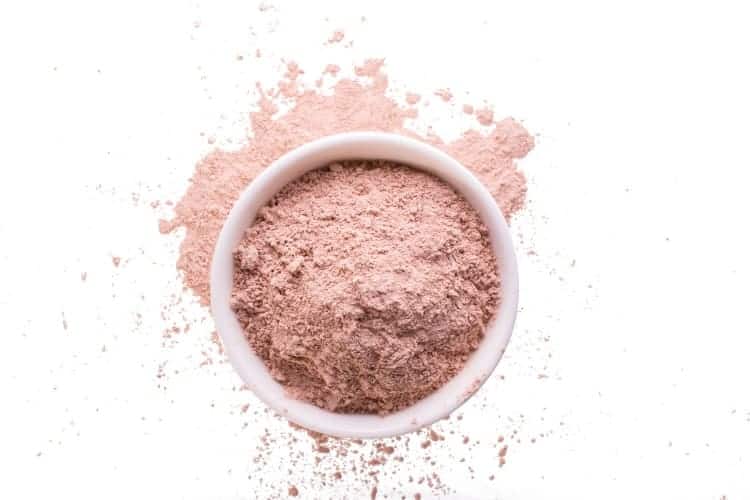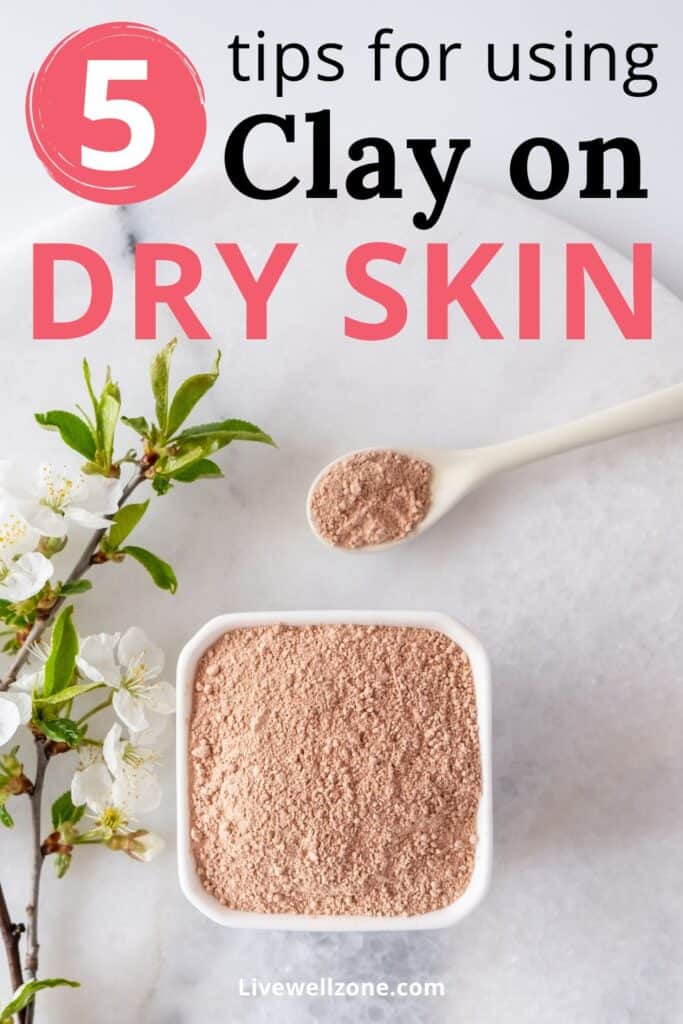
Given that clays absorb oil and have an overall “drying” effect, the idea of using them on dry skin might seem counterintuitive.
And yet, when used correctly, clays can be quite soothing and beneficial for dry skin. It’s just a matter of knowing which ones to lean towards and which ones to avoid completely.
And this post is going to help you figure all the basics when it comes to clay for dry skin.
We’re going to look at the overall benefits of clay masks for dry skin, the best types to use, as well as a quick recipe that you can try from the comfort of your home.
1. ARE CLAY MASKS GOOD FOR DRY SKIN?
Just like all other types of skin, dry skin needs a healthy balance of cleansing and re-nourishment in order to be healthy and radiant.
And the high mineral content of clays makes them a great natural option for reviving dry skin.
So, when it comes to minerals, what can you expect from clays? Well, they’re particularly rich in ingredients like:
- Potassium
- Manganese
- Sodium
- Magnesium
- Calcium
- Copper
Now, because of their mineral content, clay masks may provide the following benefits:
- Antibacterial.
- Antiseptic.
- Supports cell turnover or skin renewal.
- Removes excess moisture.
- Draws out dirt and toxins that can contribute to dryness.
Overall, clays have a balancing effect that can help stabilize dry skin that is in need of revitalization.
NOTE: when buying clays, always look for cosmetic grade. Stay away from industrial clays because they can be laced with lead, arsenic and other harmful metals.
2. WHAT CLAY IS BEST FOR DRY SKIN?

For dry skin, kaolin clay is the best choice. The reason why kaolin is ideal for dry skin is because it’s the least drying of all the clays.
In fact, while other clays are known mainly for absorbent properties, kaolin is more of an adsorbent. This means it doesn’t act like a sponge (which is what other clays do). Rather, it works more like a magnet, attracting impurities to itself (source).
This subtle difference makes a difference in how your skin feels after applying kaolin.
In addition to the above, here are some other characteristics of kaolin:
- Neutral scent.
- Very fine, powdery texture that feels light when applied to the skin.
- Natural antibacterial.
- Stimulates blood circulation which helps to give skin a healthy glow.
- Gentle exfoliating and cleansing properties.
Now, please be aware that kaolin comes in various colors that include white, yellow, red, pink and green. The darker the color gets the more drying the clay (source).
If your skin is very dry or sensitive, then use white kaolin. It’s the absolute mildest.
In addition, white kaolin is also very easy to find in local health stores and from online retailers.
3. IS BENTONITE CLAY BAD FOR DRY SKIN?
If there’s one thing that bentonite excels at, it’s reducing excess oil and shine.
In fact, bentonite clay can absorb up to 10 times its weight in water and that means that this type of clay can be very dehydrating if applied to dry skin (source).
So, unless you’re doing a very specific type of detox (where you’re trying to get rid of heavy metals, for example), you’re better off avoiding bentonite when it comes to taking care of dry skin.
4. IS PINK CLAY GOOD FOR DRY SKIN?

Pink clay is a general term that covers a variety of clays. Depending on the context, the term can refer to:
- Pink kaolin clay: compared to white kaolin, pink kaolin has a higher amount of iron oxides that give it a pink hue. In addition, pink clay is also stronger than white kaolin (but not as strong as clays like bentonite).
- A mix of white and red clays: this can be white and red kaolin, or white kaolin with red bentonite. Different companies use different blends to make a pink clay. So, depending on how dry your skin is, you might be able to use some pink clays. Just make sure not to overdo it and always moisturize afterwards.
- Australian pink clay: a kaolin clay that is sourced from Australia. Sometimes, it’s mixed with a bentonite (depends on the brand).
- French pink clay: a rarer form of pink clay that is a type of bentonite clay (and therefore very absorbent). Often used in spas.
So, can pink clay can work for dry skin? It could, depending on the severity of dryness and the type of pink clay you choose.
5. IS GREEN CLAY GOOD FOR DRY SKIN?
Also known as illite, green clay has both absorbent and adsorbent properties.
And while the adsorbent properties are helpful for dry skin, it’s strong absorbent properties can be problematic.
This makes green clay better suited for normal to oily skin and less suitable for dry skin.
DIY CLAY MASK FOR DRY SKIN
Ingredients
2 tbsp white kaolin clay
1 tablespoon + 1 teaspoon lavender hydrosol
Glass bowl
Silicone spatula (or spoon)
Instructions
- Combine the ingredients in a glass bowl.
- Stir until you have a smooth paste.
- Apply to your face (careful to avoid the eyes)
- Allow to sit for 5 to 10 minutes (don’t let the mask get fully dry).
- Rinse off with warm water.
- Pat your face dry and apply your usual moisturizer.
NOTE: the above recipe uses non-metallic utensils because it’s often said that clays are activated when they come into contact with metal. While that is technically true, don’t stress if you don’t have non-metallic tools. After all, the clay will only be in contact with those utensils for a short period of time while you mix.
FAQs ABOUT CLAY FOR DRY SKIN
What is Moroccan red clay good for?
Moroccan red clay soaks up excess oil and has astringent properties that are beneficial for both skin and hair.
Should you let a clay mask dry?
Clay masks start to work once they touch your skin. So, it’s not necessary to let them dry all the way in order to reap the full benefits.
Plus, the longer a clay mask sits on your skin, the more of an absorbent and drying effect it has.
Since we’re not trying to drain all the moisture out of your skin, it’s better to rinse off your clay mask before it’s fully dry.
Should I moisturize after applying a clay mask?
Since clay masks can be drying, it’s always a good idea to moisturize after using them. You can use a lotion, cream or face oil depending on your preference.
CONCLUSION
When it comes to pampering dry, parched skin, the kaolin family of clays is your best option. They offer gentle cleansing and detoxifying properties that balance the skin over time.
Do keep in mind that with clays masks, less is actually more. So, use them once a week or every other week depending on how your skin responds.
I hope the tips in the post – as well as the recipe – give you a helpful start when it comes to adding clays to your skin care routine.

You Might Also Enjoy:
What To Do Before and After Using A Clay Mask On Face: Step by Step Guide
Natural Skin Care Routine For Dry Skin: A Complete Guide
Honey Mask vs Clay Mask: Benefits, How To Use and Recipes
How to Exfoliate Sensitive Skin Naturally: 8 Amazing Ingredients and How to Use Them
How Do You Make a Bentonite Clay Mask Smooth? Step-by-Step Guide (with Recipes and Visuals)
15 Best Natural Ingredients For Dry Skin On Face
Kaolin Clay Mask for Dry Skin: Benefits and Tips For A Healthy Glow

